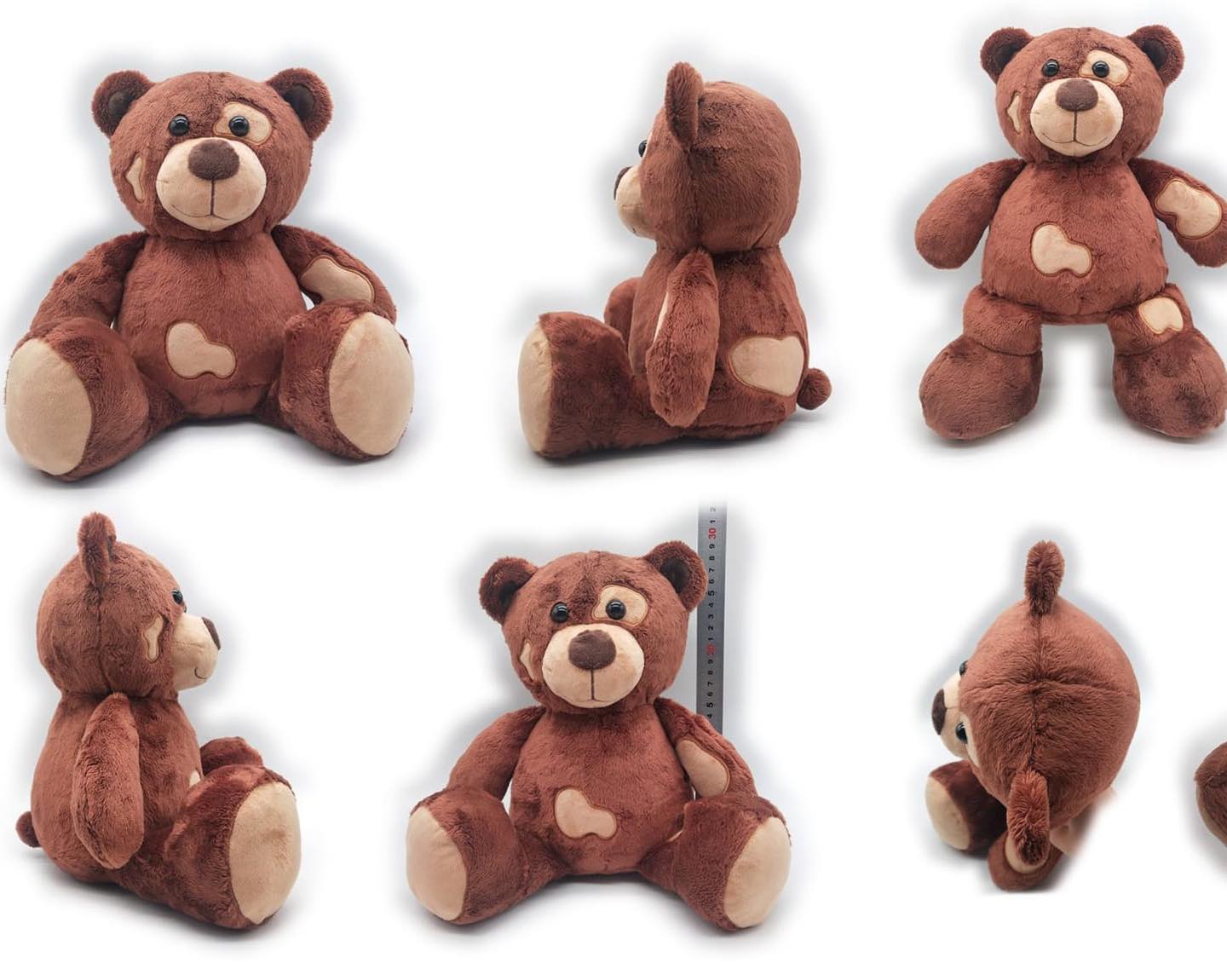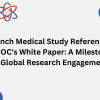
Separated, n (%) 4 (12.9) 4(13.8) 0
| Number of siblings | 1, n (%) | 4 (12.9) | 3(10.3) | 4(13.3) | .56 |
| 2, n (%) | 12 (38.7) | 17(58.6) | 18(60) | ||
| 3, n (%) | 10 (32.3) | 7(24.1) | 6(20) | ||
| 4, n (%) | 3 (9.7) | 2(6.9) | 2(6.1) | ||
| 5, n (%) | 2 (6.5) | 0 | 0 |
TABLE 2 Comparison of groups’ psychological test scores and presence of stressful life event
| Groups | P-value |
| Alopecia areata Vitiligo Controls | AA-Vi AA-C Vi-C |
Stressful life event, n (%) 19 (61.3) 25 (86.2) 9 (30) .041 .014 <.0001
| RCADS-Child, mean ± SD
Separation Anxiety |
55.61 ± 12.94 | 50.21 ± 9.6 | 48.83 ± 9.9 | .116 | .026 | .291 |
| Generalized Anxiety | 48.61 ± 11.37 | 45.14 ± 9.09 | 42.5 ± 7.41 | .195 | .021 | .261 |
| Panic | 49.65 ± 12.3 | 47.31 ± 10.9 | 44.67 ± 8.17 | .454 | .177 | .470 |
| Social Phobia | 46.19 ± 12.48 | 43.66 ± 8.72 | 39.93 ± 8.34 | .625 | .050 | .069 |
| Obsessive-Compulsive | 48 ± 12.58 | 48.03 ± 11.56 | 46.93 ± 8.89 | .935 | .874 | .952 |
| Depression | 49.68 ± 12.21 | 47.38 ± 14.3 | 41.07 ± 7.55 | .314 | .006 | .162 |
| Total Anxiety | 49.03 ± 12.96 | 45.69 ± 10.5 | 42.43 ± 7.88 | .287 | .057 | .295 |
| Total | 49.13 ± 12.9 | 45.86 ± 11.63 | 41.47 ± 7.95 | .245 | .010 | .261 |
RCADS-Parent, mean ± SD
| Separation Anxiety | 57.55 ± 15.3 | 54.38 ± 9.8 | 51.03 ± 8.43 | .700 | .167 | .181 |
| Generalized Anxiety | 54.81 ± 9.64 | 52.9 ± 11.55 | 51.6 ± 10.8 | .415 | .133 | .660 |
| Panic | 55.06 ± 12.64 | 54.24 ± 11.82 | 48.57 ± 9.9 | .795 | .014 | .030 |
| Social Phobia | 49.26 ± 12.09 | 49.45 ± 10.91 | 45.83 ± 8.47 | .900 | .291 | .199 |
| Obsessive-Compulsive | 57.39 ± 11.18 | 55.86 ± 11.17 | 54.97 ± 11.18 | .573 | .422 | .558 |
| Depression | 58.74 ± 14..95 | 56.24 ± 14.15 | 47.37 ± 8.23 | .529 | .001 | .014 |
| Total Anxiety | 55.06 ± 10.92 | 53.9 ± 12.39 | 50.2 ± 10.65 | .569 | .041 | .316 |
| Total | 56.32 ± 11.1 | 54.72 ± 12.24 | 49.43 ± 10.22 | .428 | .012 | .074 |
| Parents’ BAI, mean ± SD | 11.71 ± 8.78 | 11.45 ± 10.21 | 8.97 ± 8.71 | .667 | .169 | .235 |
| Parents’ BDI, mean ± SD | 10 ± 6.72 | 9.83 ± 5.79 | 7.53 ± 5.78 | .906 | .110 | .093 |
Abbreviations: AA, Alopecia Areata; Vi, Vitiligo; C, Controls; BAI, Beck Anxiety Inventory; BDI, Beck Depression Inventory; RCADS-Child, Revised Child Anxiety and Depression Scales, Child Version; RCADS-Parent, Revised Child Anxiety and Depression Scales, Parent Version.
significant (P < .0001). Furthermore, this parameter was statistically significantly higher in the vitiligo group compared to the AA and control groups (P = .014 and P < .0001, respectively) (Table 2).
1.1 | Evaluation of the scales related to psychological parameters and QoL
The mean CDLQI score was 5.1 ± 5.13 (0-22) in the AA group and
2.76 ± 2.39 (0-8) in the vitiligo group; the mean DeFIS score was 12.19 ± 11 (0-54) in the AA group and 14.45 ± 9.33 (0-45) in the vitiligo group, indicating no significant difference (P = .245, P = .102, respectively).
In the AA group, the scores in the RCADS-C subscales of SAD
(P = .026), GAD (P = .021), SP (P = .049) and MDD (P = .006), and the total (P = .010) scores were significantly higher compared to the control group. According to the results of RCADS-P, the scores in the subscales of PD (P = .015) and MDD (P = .001), and the total anxiety (P = .041) and total (P = .012) scores were significantly higheramong the patients in the AA group compared to the control group (Table 2). While there was no significant difference in the vitiligo group in terms of the RCADS-C scale scores, according to RCADS-P, the PD (P = .030) and MDD (P = .014) subscores of the patients were significantly higher than the controls (Table 2). There was no significant difference between the AA and vitiligo groups in relation to the RCADS-C and RCADS-P scores. Similarly, no significant difference was observed between the AA, vitiligo, and control groups in terms of the parents’ BAI and BDI scores (Table 2).
Concerning the relationship between disease severity and total anxiety and depression scores, in the AA group, the SALT score had a positive correlation with RCADS-C depression (P = .014) and total anxiety (P = .032) and RCADS-P depression (P = .023) and total anxiety (P = .014) scores. However, in this group, no significant correlation was detected between the parents’ BAI (P = .321) and BDI (P = .161) scores. In the vitiligo group, there was no significant correlation between the VASI score and the total anxiety and depression scores, but the VASI score was found to be positively correlated with the RCADS-P SAD score (P = .048). There was no significant relationship between the parents’ BAI (P = .829) and BDI (P = .981) scores in the vitiligo group (Table 3).
In the AA group, the CDLQI score was positively correlated with the scores obtained from SALT (P = .008), RCADS-C depression (P = .012) and total anxiety (P = .041), DeFIS (P = .010), parental BAI (P = .011), and parental BDI (P = .022). In the vitiligo group, the CDLQI score had a positive correlation with the scores of RCADS-C depression (P = .001) and total anxiety (P = .007), and RCADS-P
| TABLE 3 Correlation between SALT,
VASI, CDLQI, DeFIS, RCADS-C, RCADS-P, BAI, and BDI scores in patients with alopecia areata and vitiligo (Spearman rho)
Abbreviations: BAI, Beck Anxiety Inventory; BDI, Beck Depression Inventory; CDLQI, Children’s Dermatology Life Quality Index; DeFIS, Dermatological Family Impact Scale; RCADS-Child, Revised Child Anxiety and Depression Scales, Child Version; RCADS-Parent, Revised Child Anxiety and Depression Scales, Parent Version; SALT, Severity of Alopecia Tool; VASI, Vitiligo Area Severity |
||||||||||||||||||||||||||||||||||||||||||||||||||||||||||||||||||||||||||||||||||||||||||||||||||||||||||||||||||||||||||||||||||||||||||||||||||||||||||||||||||||||||||||||||||||||||||||||||||||||||||||||||||||||||||||||||||||||
Index.
*P < .05.
**P < .01.
depression (P = .040); however, CDLQI did not have a significant relationship with parental BAI (P = .379), parental BDI (P = .183), VASI (P = .804), and DeFIS (P = .500) (Table 3).
In the AA group, the DeFIS score had a positive correlation with the SALT score (P < .0001), the RCADS-C depression (P = .037) and total anxiety (P = .036) scores, the RCADS-P depression (P = .026) and total anxiety (P = .001) scores, the parental BAI score (P = .03), and the parental BDI score (P < .0001). In the vitiligo group, the DeFIS score was positively correlated with the scores of RCADS-C total anxiety (P = .013), and RCADS-P depression (P = .035) and total anxiety (P = .012); however, no significant correlation was observed between the DeFIS score and the parental BAI (P = .169), parental BDI (P = .337), and VASI (P = .340) scores (Table 3).
2 | DISCUSSION
Psychiatric symptoms are very common in dermatology patients, and an undetected psychiatric disorder can significantly reduce the patient’s QoL since it can delay treatment or recovery. We designed this study to better understand the impact of AA and vitiligo on children and their parents. Therefore, we have attempted to study the dimensions of anxiety disorders, that is, SAD, SP, GAD, OCD, and PD. Furthermore, in the current study, the anxiety and depression scales were directly evaluated in addition to the DeFIS scale, which indirectly measures the psychological status of the parents. Present results suggest differences between AA and vitiligo pediatric patients. The presence of stressful life events before the onset of both AA and vitiligo in the pediatric group and emphasized its greater importance for the latter. In addition, anxiety symptoms were more common in AA patients than those with vitiligo.
In a study by Bilgiç et al, AA was shown to have a positive correlation with higher state and trait anxiety and depression scores in children.11 In another study examining children with AA aged nine to 11 years, the patients were found to have significantly higher levels of psychopathology than the controls.7 In our study, we observed a significant difference between the pediatric patients with AA and the control group in terms of the RCADS-C subscales scores in SAD, GAD, SP, and depression, as well as the total scale score, which contributes to and supports previous research. In addition, PD and total anxiety scores were significantly higher in children with AA in the RCADS-P scale. While no significant difference was found in any of the subscales of RCADS-C in the evaluation of vitiligo patients, according to RCADS-P, the PD and depression scores of the patients in the vitiligo group were significantly higher compared to the control parents. The results of studies investigating depression and anxiety scores in patients with vitiligo are variable. In a study evaluating children and adolescents with vitiligo, depression scores were found to be higher than the control groups only in the children (8-12 years) group.16 In another study, children’s level of anxiety and depression symptoms did not significantly differ from the control group.15 However, Ucuz et al reported that the state and trait anxiety scores of children with vitiligo were different from those of the controls.17 The awareness that pediatric patients with alopecia areata and vitiligo are closely related to psychological factors is essential and psychiatric evaluation is important in the management of this population. Such patients should be directed to the child and adolescent psychiatrist, and treatment of the psychological condition can contribute to the medical treatment of dermatological disease.
In a recent study involving the parents of children with vitiligo, the depressive symptoms of the parents were higher than those of the control group, but the authors did not observe a similar link for anxiety symptoms.15 In another study evaluating depression and anxiety symptoms among the carers of patients with different types of dermatoses (vitiligo, atopic dermatitis, and psoriasis), higher levels of anxiety and depression were observed compared to the general population, but no difference was observed between disease groups.18 To the best of our knowledge, there is no study in the literature examining the psychiatric state of the parents of children with AA. In the current study, there was no difference between the anxiety and depression levels of the parents of the patients with AA and vitiligo and those in the control group. Similarly, no significant difference was observed between the vitiligo and AA groups in terms of the DeFIS scores, through which we evaluated the QoL of the parents.
A small number of studies related to the pediatric cases have shown the presence of stressful life events before the onset of AA as a potential trigger of the disease at a rate of 9.5% to 81%.31-34 In studies conducted with children with vitiligo, a history of stressful life events before the onset of the disease was reported at the rates of 48.8%15 and 77%.17 In our study, 61% of children with AA and 86.2% of children with vitiligo had a history of stressful life events in the year prior to the onset of the disease.
There is only one study in the literature that evaluated the severity of AA together with psychological state in children, and the results did not show a significant relationship.11 In contrast, in our study, there was an increase in the depression and anxiety scores of the patients with AA with the increasing severity of the disease, although a positive correlation of disease severity and anxiety and depression levels was not detected for the parents. In the evaluation of patients with vitiligo, Önen et al did not report a relationship between the severity of the disease and anxiety and depression scores in parents or children.15 In other studies in which children and adolescents were examined, no significant relationship was observed between vitiligo severity and anxiety16,17 and depression16 scores. In our study, only the level of SAD was increased with the increasing severity of vitiligo, but there was no positive correlation between disease severity and parental anxiety and depression levels.
In a previous study examining the effect of AA on QoL, it was shown that the QoL of the parents decreased as the severity of the disease increases in the child.35 In a study by Bilgiç et al, AA severity was shown to have a negative effect on the QoL of children.11 Similarly, in our study, impairment in the QoL of both patients and their parents increased with the increasing disease severity in the AA group. However, there are conflicting results in studies investigating the effect of the severity of vitiligo on QoL. For example, in one study, the severity of vitiligo in adolescents was observed to affect QoL negatively16 while two other studies including children and adolescents reported no relationship between QoL and the body surface area36 and vitiligo severity.15 According to another study in which the effect of childhood vitiligo on parents’ QoL was examined, as the area of involvement of vitiligo increased, the parental QoL decreased.37 In the current study, we found no correlation between disease severity and the QoL of patients or parents.
The main limitation of this study is the small sample size and cross-sectional design, and the lack of a structured interview and psychiatric evaluation can be considered as another limitation.
The results of the study indicated that the presence of stressful life events was more common in pediatric patients with vitiligo than those with AA. On the other hand, anxiety symptoms were more prevalent in patients with AA than those with vitiligo. While the severity of AA was correlated with the QoL of the affected children and their parents, there was no such correlation in vitiligo. The QoL of the patients affected the anxiety and depression levels of their parents in the AA group, but not in the vitiligo group. It is important to identify pediatric patients with alopecia areata and vitiligo who need extra psychological support and refer them to the child and adolescent psychiatrist. In conclusion, providing a psychological evaluation and support for both patients and their parents will not only help them better cope with chronic dermatoses that cause cosmetic disorders such as vitiligo and AA but also contribute to the improvement of their QoL.
ACKNOWLEDGMENTS
We thank Esma İnan Yüksel, MD, for her valuable contribution.
DATA AVAILABILITY STATEMENT
Data openly available in a public repository that issues datasets with DOIs.
ORCID
Sevil Savaş Erdoğan https://orcid.org/0000-0002-4392-4671
Tuğba Falay Gür https://orcid.org/0000-0002-3233-9610
Bilal Doğan https://orcid.org/0000-0002-0855-5209
REFERENCES
- Kessler RC, Petukhova M, Sampson NA, Zaslavsky AM, Wittchen H-U. Twelve-month and lifetime prevalence and lifetime morbid risk of anxiety and mood disorders in the United States. Int J Methods Psychiatr Res. 2012;21(3):169-184.
- Mirzoyev SA, Schrum AG, Davis MDP, Torgerson RR. Lifetime incidence risk of alopecia areata estimated at 2.1% by Rochester Epidemiology Project, 1990–2009. J Investig Dermatol. 2014;134(4):1141-1142.
- Le Poole IC, van den Wijngaard RM, Westerhof W, Dutrieux RP, Das PK. Presence or absence of melanocytes in vitiligo lesions: an immunohistochemical investigation. J Investig Dermatol. 1993;100(6):816-822.
- Tobin DJ, Swanson NN, Pittelkow MR, Peters EM, Schallreuter KU. Melanocytes are not absent in lesional skin of long duration vitiligo. J Pathol. 2000;191(4):407-416.
- Krüger C, Schallreuter KU. A review of the worldwide prevalence of vitiligo in children/adolescents and adults. Int J Dermatol. 2012;51(10):1206-1212.
- Whitton ME, Ashcroft DM, Barrett CW, Gonzalez U. Interventions for vitiligo. Cochrane Database Syst Rev. 2006;(1):CD003263.
- Liakopoulou M, Alifieraki T, Katideniou A, et al. Children with alopecia areata: psychiatric symptomatology and life events. J Am Acad Child Adolesc Psychiatry. 1997;36(5):678-684.
- Reeve EA, Savage TA, Bernstein GA. Psychiatric diagnoses in children with alopecia areata. J Am Acad Child Adolesc Psychiatry. 1996;35(11):1518-1522.
- Chu SY, Chen YJ, Tseng WC, et al. Psychiatric comorbidities in patients with alopecia areata in Taiwan: a case–control study. Br J Dermatol. 2012;166(3):525-531.
- Ghanizadeh A. Comorbidity of psychiatric disorders in children and adolescents with alopecia areata in a child and adolescent psychiatry clinical sample. Int J Dermatol. 2008;47(11):1118-1120.
- Bilgiç Ö, Bilgiç A, Bahalı K, Bahali A, Gürkan A, Yılmaz S. Psychiatric symptomatology and health-related quality of life in children and adolescents with alopecia areata. J Eur Acad Dermatol Venereol. 2014;28(11):1463-1468.
- Lai Y, Yew Y, Kennedy C, Schwartz R. Vitiligo and depression: a systematic review and meta-analysis of observational studies. Br J Dermatol. 2017;177(3):708-718.
- Osinubi O, Grainge MJ, Hong L, et al. The prevalence of psychological comorbidity in people with vitiligo: a systematic review and meta-analysis. Br J Dermatol. 2018;178(4):863-878.
- Vallerand IA, Lewinson RT, Parsons LM, et al. Vitiligo and major depressive disorder: a bidirectional population-based cohort study. J Am Acad Dermatol. 2019;80(5):1371-1379.
- Önen Ö, Kundak S, Özek Erkuran H, Kutlu A, Çakaloz B. Quality of life, depression, and anxiety in Turkish children with vitiligo and their parents. Psychiatry Clin Psychopharmacol. 2019;29(4):492-501.
- Bilgiç Ö, Bilgiç A, Akiş H, Eskioğlu F, Kiliç E. Depression, anxiety and health-related quality of life in children and adolescents with vitiligo. Clin Dermatol. 2011;36(4):360-365.
- Ucuz I, Altunisik N, Sener S, et al. Quality of life, emotion dysregulation, attention deficit and psychiatric comorbidity in children and adolescent with vitiligo. Clin Exp Dermatol. 2020.
- Manzoni APDdS, Weber MB, Nagatomi ARdS, Pereira RL, Townsend RZ, Cestari TF. Assessing depression and anxiety in the caregivers of pediatric patients with chronic skin disorders. An Bras Dermatol. 2013;88(6):894-899.
- Carroll CL, Balkrishnan R, Feldman SR, Fleischer AB Jr, Manuel JC. The burden of atopic dermatitis: impact on the patient, family, and society. Pediatr Dermatol. 2005;22(3):192-199.
- Tekin B, Gurel MS, Topkarci Z, et al. Assessment of quality of life in Turkish children with psoriasis and their caregivers. Pediatr Dermatol. 2018;35(5):651-659.
- Olsen EA, Hordinsky MK, Price VH, et al. Alopecia areata investigational assessment guidelines–Part II. J Am Acad Dermatol. 2004;51(3):440-447.
- Hamzavi I, Jain H, McLean D, Shapiro J, Zeng H, Lui H. Parametric modeling of narrowband UV-B phototherapy for vitiligo using a novel quantitative tool: the Vitiligo Area Scoring Index. Arch Dermatol. 2004;140(6):677-683.
- Balcı DD, Sangün Ö, İnandı T. Cross validation of the turkish version of children’s dermatology life quality index. J Turk Acad Dermatol. 2007;1(4):71402a.
- Chorpita BF, Yim L, Moffitt C, Umemoto LA, Francis SE. Assessment of symptoms of DSM-IV anxiety and depression in children: A revised child anxiety and depression scale. Behav Res Ther. 2000;38(8):835-855.
- Gormez V, Kılınçaslan A, Orengul AC, et al. Psychometric properties of the Turkish version of the Revised Child Anxiety and Depression Scale-Child Version in a clinical sample. Psychiatry Clin Psychopharmacol. 2017;27(1):84-92.
- Gormez V, Kilincaslan A, Ebesutani C, et al. Psychometric properties of the parent version of the Revised Child Anxiety and Depression Scale in a clinical sample of Turkish children and adolescents. Child Psychiatry Hum Dev. 2017;48(6):922-933.
- Turan E, Gürel MS, Erdemir AT, Yüksel EI. Development and preliminary validation of the dermatological diseases family impact scale. Turkderm. 2014;48(2):74-81(in Turkish).
- Ulusoy M, Sahin NH, Erkmen H. The Beck anxiety inventory: psychometric properties. J Cogn Psychother. 1998;12(2):163-172.
- Hisli N. A study on the validity of Beck Depression Inventory. J Psychol. 1988;6:118-122(in Turkish).
- Hisli N. Validity and reliability of Beck Depression Inventory in university students. J Psychol. 1989;7:3-13(in Turkish).
- Manolache L, Petrescu-Seceleanu D, Benea V. Alopecia areata and relationship with stressful events in children. J Eur Acad Dermatol Venereol. 2009;23(1):107-109.
- Díaz-Atienza F, Gurpegui M. Environmental stress but not subjective distress in children or adolescents with alopecia areata. J Psychosom Res. 2011;71(2):102-107.
- Andreoli E, Mozzetta A, Provini A, Cacciaguerra M, Paradisi M, Bonda PF. Types of stress within child alopecia. Dermatol Psychosomat. 2002;3(1):26-29.
- Kakourou T, Karachristou K, Chrousos G. A case series of alopecia areata in children: impact of personal and family history of stress and autoimmunity. J Eur Acad Dermatol Venereol. 2007;21(3):356-359.
- Putterman E, Patel DP, Andrade G, et al. Severity of disease and quality of life in parents of children with alopecia areata, totalis,
and universalis: a prospective, cross-sectional study. J Am Acad Dermatol. 2019;80(5):1389-1394.
- Silverberg JI, Silverberg NB. Quality of life impairment in children and adolescents with vitiligo. Pediatr Dermatol. 2014;31(3):309-318.
- Andrade G, Rangu S, Provini L, Putterman E, Gauthier A, CasteloSoccio L. Childhood vitiligo impacts emotional health of parents: a prospective, cross-sectional study of quality of life for primary caregivers. J Patient Rep Outcomes. 2020;4(1):1-5.




